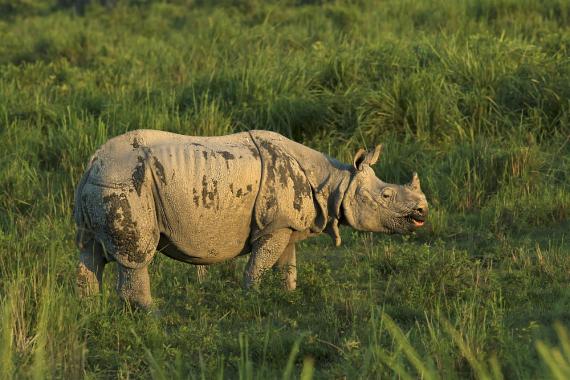Successful reduction in rhino poaching in Nepal
Current initiative
Published

Greater one-horned rhino grazing. Credit: Avijan Saha
Nepal, one of the poorest countries in the world and with generally weak governance, has been able to implement a successful rhino conservation programme with the help of local communities.
Location
Research was undertaken in Kathmandu, Chitwan National Park (CNP), Bardia National Park (BNP) and Suklaphanta Wildlife Reserve (SWR)
The poaching and wildlife trade problem
Species affected Greater One-horned Rhino Rhinoceros unicornis
Products in tradeRhino horn
Overview of the problem
Poaching for international demand.
The anti-IWT initiative
In 2010, the government set up wildlife crime control committees within the Ministry of Forest and Soil Conservation, in the Department of National Parks and Wildlife Conservation (DNPWC). Alongside the National Trust for Nature Conservation (NTNC), anti-poaching units were set up in CNP with recruits from local communities. The communities around BNP have also selected 100 youths as volunteers to patrol the park’s borders. Plus, payments are provided for informers around CNP.
With the involvement of WWF Nepal, families of those who have surrendered their guns are supported with alternative livelihood options. Entry fees to CNP have been increased in order to generate more revenue for local communities. In addition, local communities are increasingly involved in tourism activities, for example setting up homestays. Homestay owners are often provided with training from NGOs working in the area, increasing their income and enhancing their skills.
The strategy
Strengthening disincentives for illegal behaviour
Increasing incentives for wildlife stewardship
Build/and or support sense of community ownership or stewardship
Has the initiative made a difference?
In both 2011 and 2012 only one rhino was poached, from an average of 10 between 2008-2010. A census showed that rhino numbers increased across the three parks between 2008 and 2011.
Anecdotal evidence shows that local communities involved in anti-poaching units are successful at apprehending poachers, confiscating 40 guns in one month alone in 2012.
Cooperation and communication improved between the DNPWC and local communities. This is partly due to communities receiving a 50% share of the DNPWC’s protected area gross revenue. This has helped to change attitudes as the communities understand it is in their interest to protect rhinos.
What works and why
Increased support to local communities, including enhanced revenue sharing, contributed to a reduction in poaching. Local people are showing greater support for rhino protection and have helped to increase tourism numbers.
Factors for success
Supportive, multi-stakeholder partnerships with a shared vision
Clear and tangible benefits to local communities from wildlife (These may be financial and/or non-financial)
Organisers, donors and partners
For further information contact (peoplenotpoaching@gmail.com).